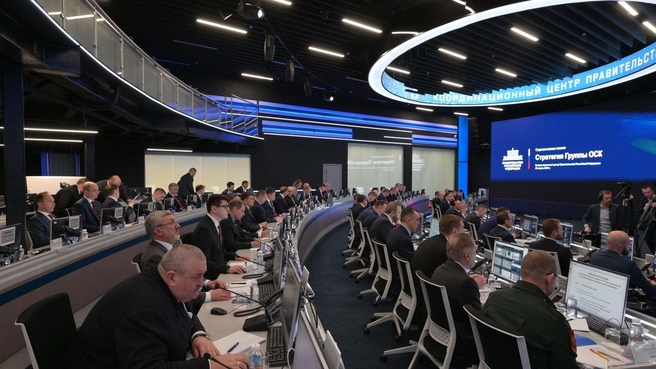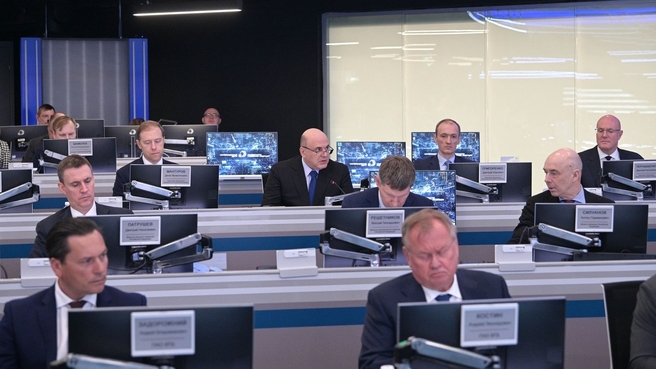Mikhail Mishustin: “The United Shipbuilding Corporation is the industry’s largest integrated organisation that controls up to 80 percent of all manufacturing facilities. We must now formulate the entire list of measures that will facilitate the cost-effective organisation of manufacturing facilities in the context of their technology and production processes.”
Mikhail Mishustin’s opening remarks:
Good afternoon, colleagues.
Today, we will discuss a wide range of issues related to the development of the shipbuilding industry. We will discuss the civilian aspects, primarily.
Of course, the industry is facing the most serious challenges in conditions of the sanctions. All foreign ships that carried Russian cargo have left our transport services market. Well-established relations between companies have also been severed.
Our Western partners have violated all our agreements and have declined to continue cooperating with our companies. Today, it is very important to continue developing and manufacturing a wide range of advanced high-tech components and systems. The President noted that it is necessary to develop our domestic shipbuilding competences more actively and attain technological sovereignty in designing critical ship equipment and the most significant production processes.
It is important that, despite the difficulties, the industry continues to operate dynamically. Enterprises are using the available state support measures, including specialised and systematic measures, specifically, subsidy programmes under the Industrial Development Fund.
Last year, we built over 100 ships, including two Aframax class tankers, at the Zvezda facility in the Primorye Territory. We built the railway ferry Alexander Deyev at the shipyard in Komsomolsk-on-Amur. The ferry links Sakhalin Island with mainland Russia. Additionally, we built a high-seas platform with an LNG reservoir for the first stage of the Arctic LNG 2 project at an enterprise in the Murmansk Region.
Moreover, we have built fishing and crab boats at various shipyards in the country.
Manufacturers are currently expanding their contractual portfolio, and it now exceeds 300 sea and river ships. There are plans to build over 1,700 civilian ships until 2037.
The Government prioritises the development of the Northern Sea Route. We continue to expand the icebreaker fleet for year-round navigation. This fleet will receive five new nuclear-powered ships in the next few years, including Rossiya, the first icebreaker in the unique Lider series.
The United Shipbuilding Corporation acts as the industry’s largest integrated organisation, and it controls up to 80 percent of all production facilities.
As per the President’s instruction, VTB Bank began managing United Shipbuilding Corporation last year. We must now formulate the entire list of measures that will facilitate the cost-effective organisation of manufacturing facilities in the context of their technology and production processes.
This includes digital transformation projects for boosting labour productivity and improving production system management.
Colleagues,
Representatives of leading industry enterprises, research agencies and major ship-owners have gathered here. I suggest we discuss the United Shipbuilding Corporation’s possible and feasible goals and tasks.
It is necessary to create an agreed-upon position, as regards the shipbuilding corporation’s development priorities, and to finalise the presidential instructions concerning long-term funding sources for civilian fleet construction programmes.






